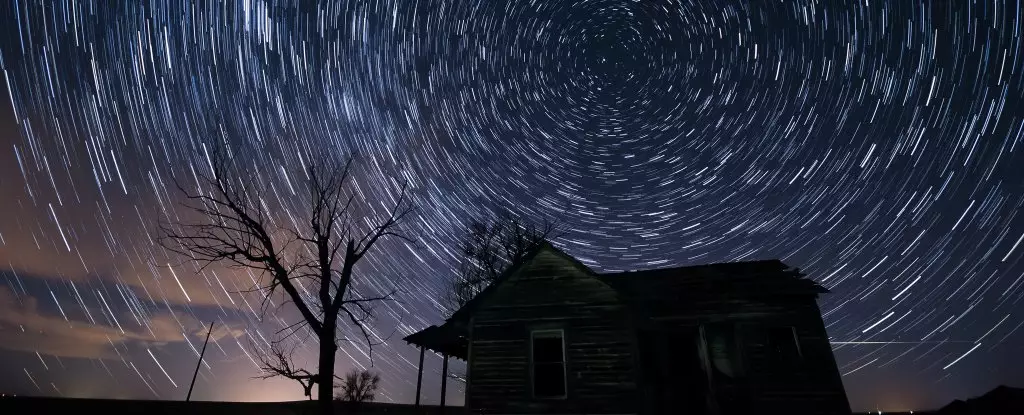With the arrival of January 2025, stargazers are in for a treat as numerous celestial events grace our winter sky. The first weekend of the year sets the stage for an exciting exhibition, showcasing the Quadrantid meteor shower, a ‘SuperSun’ occurrence, and a thrilling lunar-planetary pairing. In this article, we explore these phenomena to help enthusiasts make the most of the delights offered by this month’s night sky.
Starting on January 3rd and peaking on the 4th, the Quadrantids promise a robust display with an anticipated Zenithal Hourly Rate (ZHR) of 80 meteors per hour. This meteor shower is distinct due to its short peak, which many observers might miss if they don’t plan accordingly. Fortunately, the waxing crescent Moon will only be 27% illuminated, allowing for clear views of this spectacular source of shooting stars.
The Quadrantids originate from asteroid 2003 EH1, a unique characteristic that separates it from other meteor showers such as the Geminids, which stem from a rock-comet named Phaethon. This connection to an asteroid makes the Quadrantid meteors more fascinating; however, their fleeting nature poses a challenge. Observers in North America and Europe are encouraged to seek out the meteor show on both the nights leading up to and immediately following the peak in case of timing variances.
On January 4th, as we enjoy the Quadrantid meteor shower, Earth also reaches a pivotal moment in its orbit—perihelion, the point at which we are closest to the Sun. This year, perihelion occurs at approximately 0.98333 AU distance at around 13:00 UT (8:00 AM EST). Interestingly, this closest approach coincides with the chill of winter in the Northern Hemisphere—a sharp contrast to the warmth of summer felt in the Southern Hemisphere.
This phenomenon is a reflection of the Earth’s elliptical orbit and its various cycles, known as Milankovitch cycles. The slight increase in the solar size perceived from Earth during January could intrigue many skywatchers. In fact, the apparent size of the Sun is larger in winter than in summer, offering a subtle yet impactful reminder of the complex dynamics of our solar system.
Compounding the excitement of meteor-watching, January 4th also brings a lunar occultation where the Moon passes directly in front of Saturn around 17:24 UT. This event will primarily be visible in Europe at dusk, where observers will see the majestic planet gradually disappear behind the Moon’s dark edge and then reappear from behind its illuminated side. Given Saturn’s prominence and the delightful spectacle of the rings, this moment is not to be missed.
The 25% illuminated crescent Moon provides a captivating backdrop, making January 4th an unforgettable night for lucky viewers. Saturn’s grandeur, combined with the elegance of a crescent Moon, offers a visually striking experience as well as an opportunity to engage with the wonders of the cosmos. For those in certain regions, this is just one of two occurrences of lunar occultation in 2025, the following event happening on February 1st, providing even more chances to observe these celestial events.
For those who may not be able to experience these events in person, astronomer Gianluca Masi has arranged three virtual sessions over the weekend. These online gatherings focus on educating the public about the Quadrantid meteors, the lunar occultation of Saturn, and a close approach between the Moon and Venus. With many enthusiasts eager to learn more, these sessions are a stab at bridging the gap between amateur stargazers and expert knowledge.
The charm of the night sky doesn’t only rest on observing individual events but also on sharing the experience with fellow enthusiasts. The allure of gathering around the glow of a telescope or sharing vibrant images of celestial happenings binds the community of skywatchers in a shared passion for astronomy.
As we usher in a new year of celestial exploration, January 2025 paves the way for an exhilarating lineup of astronomical phenomena. The Quadrantid meteor shower’s potential offers a captivating start, while events like perihelion and the lunar occultation add layers to our experience of the cosmos.
Winter nights may be frigid, but by bundling up and arming ourselves with thermoses filled with hot beverages and appropriate gear, we make the most of our time stargazing. Here’s to another year of discovery, wonder, and connection as we delve deeper into our universe, starting with the mesmerizing sights of January!


Leave a Reply